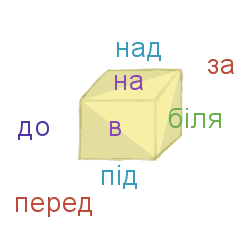
When telling the location of or destination to a particular object you may encounter some difficulties with what preposition to use or how to change the noun according to it.
In this article I will show you the most popular prepositions and their common usage.
Here are some main points of telling the location and destination:
-
depending on the preposition and the question put to the sentence there can be 4 different cases involved in: Genitive, Accusative, Instrumental, Locative;
-
Locative case is never involved in telling the destination, it can only point on the location of an object.